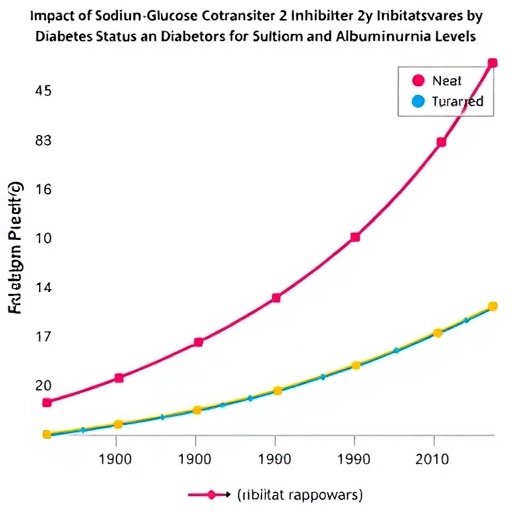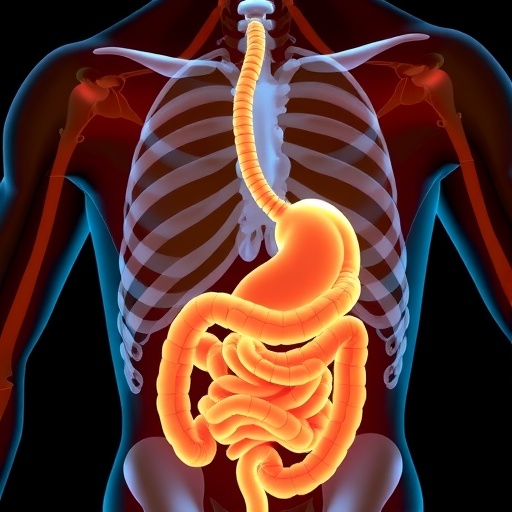A groundbreaking analysis recently presented at the American Society of Nephrology Kidney Week 2025 illuminates the profound benefits of sodium-glucose cotransporter 2 (SGLT2) inhibitors across a diverse population spectrum, transcending traditional diabetic categorizations. This large-scale study, published in the esteemed journal JAMA, reveals a compelling narrative: SGLT2 inhibitors significantly improve kidney function, reduce hospitalization rates, and lower mortality, regardless of a patient’s diabetes status or their urine albumin to creatinine ratio levels. These findings represent a pivotal advance in nephrology and cardiovascular therapeutics, potentially reshaping clinical guidelines worldwide.
SGLT2 inhibitors, initially recognized for their glucose-lowering effects in type 2 diabetes, have emerged as multifaceted agents with pleiotropic effects extending well beyond glycemic control. Mechanistically, these compounds inhibit the sodium-glucose cotransporter 2 in the proximal renal tubules, promoting glucosuria and natriuresis. This process not only aids in reducing hyperglycemia but also mitigates intraglomerular hypertension, a key driver of progressive kidney damage. The study’s data demonstrate that these agents afford renal protection in a broad clinical spectrum, including individuals without diabetes, underscoring their therapeutic versatility.
Central to the research is the robust stratification of participants based on urine albumin to creatinine ratio (UACR), a biomarker strongly associated with kidney disease progression and cardiovascular risk. Historically, elevated UACR is a hallmark of diabetic nephropathy, yet this study’s meticulous analysis delineates that the benefits of SGLT2 inhibition extend seamlessly across varying UACR strata. This suggests that SGLT2 inhibitors may modulate fundamental pathophysiologic pathways common to both diabetic and non-diabetic kidney diseases, offering hope for a wide patient demographic.
The implications for hospitalization metrics are equally noteworthy. Hospital admissions due to cardiovascular and renal complications contribute substantially to healthcare burdens globally. The study reports a statistically significant reduction in hospitalization incidences among patients receiving SGLT2 inhibitor therapy, independent of diabetes. This highlights not only the direct clinical benefit to individual patients but also suggests a potentially transformative impact on healthcare resource utilization and cost containment.
Furthermore, the mortality outcomes associated with SGLT2 inhibitor use present a transformative horizon in patient longevity. Mortality, particularly from cardiovascular causes, remains the leading cause of death worldwide. The data elucidate a decrease in all-cause mortality with SGLT2 inhibitors, providing a dual protective benefit for both renal and cardiovascular systems. This duality may reflect intertwined pathologies and the unique ability of SGLT2 inhibitors to address them concomitantly.
Investigators headed by Dr. William G. Herrington at the University of Oxford were meticulous in their approach, employing rigorous statistical models to adjust for confounding variables. Their analyses accounted for demographic heterogeneity, baseline renal function, and comorbid conditions, thereby strengthening the reliability of the conclusions drawn. This methodological rigor ensures that the reported benefits are not artifacts but true effects.
At the cellular level, SGLT2 inhibitors appear to reduce renal tubular workload and oxygen demand, mitigating hypoxia—a critical mechanistic insight supported by animal models and human physiological studies. This nephroprotective environment potentially slows the fibrosis and scarring processes that typify chronic kidney disease progression. By intervening early in these molecular pathways, SGLT2 inhibitors could alter the natural history of renal decline.
The study’s findings corroborate and extend prior clinical trials which hinted at the cardiorenal protective qualities of these drugs but lacked definitive clarity outside diabetic cohorts. This research fills a crucial knowledge gap, enabling clinicians to consider SGLT2 inhibitors in therapeutic regimens for a broader patient base, beyond the traditional diabetic indication. Regulatory and guideline committees may soon use these data to update prescribing practices globally.
The revelation that urine albumin to creatinine ratios do not limit the efficacy of SGLT2 inhibitors challenges previously held assumptions about patient eligibility. Given that UACR measurement is a common clinical test, the findings simplify decision-making processes, facilitating precision medicine. The ability to offer potent kidney and heart protection without the strict confines of albuminuria levels could lead to wider acceptance and earlier intervention.
The extensive patient population analyzed includes those with varying degrees of kidney function, comorbid cardiovascular disease, and non-diabetic etiologies of kidney impairment. This heterogeneity reflects real-world clinical scenarios, enhancing the external validity of results. The study’s breadth suggests that the mechanisms of action of SGLT2 inhibitors have universal applicability to renal and cardiovascular homeostasis.
The clinical paradigm affirming glycemic control as the sole objective in SGLT2 inhibitor therapy is evolving. This study reinforces a paradigm shift towards evaluating drugs not only by their metabolic efficacy but by their pleiotropic organ-protective effects. SGLT2 inhibitors now stand at the frontier of integrative treatments for chronic disease syndromes, especially those involving the interplay between the kidney and cardiovascular system.
In summary, this pioneering research from JAMA and presented at Kidney Week 2025 highlights SGLT2 inhibitors as transformative agents in nephrology. Their ability to reduce hospitalization and mortality risks regardless of diabetes status or urine albumin to creatinine ratio is a testament to their multifactorial therapeutic potential. As the medical community digests these findings, anticipation grows for widespread clinical adoption and improved patient outcomes globally.
Subject of Research: Effects of Sodium-Glucose Cotransporter 2 (SGLT2) inhibitors on kidney, hospitalization, and mortality outcomes in diabetic and non-diabetic populations.
Article Title: (doi:10.1001/jama.2025.20835)
News Publication Date: Presented at the American Society of Nephrology Kidney Week 2025.
Web References: To be accessed via the For The Media website and JAMA Network at embargo release.
Keywords: Diabetes, Glucose, Inhibitory effects, Kidney, Urine, Mortality rates, Hospitals, Albumin, Patient monitoring
Tags: albuminuria levels and cardiovascular riskclinical guidelines for nephrologydiabetes management and kidney diseasediabetes status and renal protectionglycemic control and kidney healthhospitalization rates and mortality reductionlarge-scale nephrology studiesnephrology and cardiovascular therapeuticspleiotropic effects of SGLT2 inhibitorsSGLT2 inhibitors and kidney functionsodium-glucose cotransporter-2 inhibitorsurine albumin to creatinine ratio





